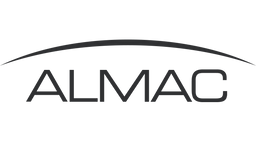The urgency to address climate change has never been more critical. As the world strives to meet the ambitious target of stabilizing temperatures at 1.5°C above pre-industrial levels, innovative solutions to reduce atmospheric carbon dioxide (CO2) levels are in high demand. Enter FabricNano, specialists in enzyme immobilization and a technology provider for a revolutionary approach to carbon dioxide removal (CDR).
A Leap Forward in Carbon Capture: Over half a million dollars of SMART funding from United Kingdom Research Innovation (URKI)

FabricNano has created conditions that not only expedite mineralization but also allow for the use of larger rock particles.
The Challenge of Enhanced Weathering
Enhanced weathering (EW) is a promising CDR technology that accelerates natural processes to capture CO2 from the atmosphere and lock it away as stable carbonate minerals. In the UK alone, spreading silicate materials on agricultural land could sequester millions of tonnes of CO2 annually. However, to truly maximize the potential of EW and improve its commercial viability, there’s a pressing need to speed up the sequestration process significantly.
FabricNano's Innovative Solution
FabricNano has taken up this challenge by developing a groundbreaking approach involving the enzyme carbonic anhydrase. This enzyme is absolutely necessary in catalyzing the conversion of CO2 and water into bicarbonate and protons, facilitating faster mineralization reactions. By stabilizing a recombinant form of carbonic anhydrase onto crushed basalt (or any crushed silicate rock), FabricNano has created conditions that not only expedite mineralization but also allow for the use of larger rock particles, reducing costs and the carbon footprint associated with rock grinding.
FabricNano’s technology represents a significant leap forward in enhanced weathering
UKRI Project Focus
With the support of United Kingdom Research Innovation funding, FabricNano’s UKRI funded project aims to:
- Identify the most effective silicate rocks for CO2 capture in different soil types.
- Test the optimized rock-enzyme conjugates in real-world agricultural settings.
- Evaluate the carbon capture performance using various methodologies.
- Determine the optimal balance between capture speed and rock particle size.
- Assess any additional benefits to soil health and plant growth.
Game-Changing Potential
FabricNano’s technology represents a significant leap forward in EW, promising faster CO2 sequestration and reduced energy requirements. This not only positions FabricNano as a leader in the CDR field but also contributes to the global effort to combat climate change by offering a scalable and efficient solution.
Economic and Environmental Impact
The project not only has the potential to create jobs and stimulate economic growth but also offers substantial environmental benefits by enhancing soil health, reducing erosion, and enabling more sustainable agricultural practices. Moreover, it supports the UK Government’s 2050 net-zero target and contributes to global sustainable development goals.
A Vision for the Future
The success of this project could fundamentally transform the way we approach carbon sequestration, making it faster, more efficient, and more commercially viable. With significant market potential and a strong business plan in place, FabricNano is poised to lead the charge in the global fight against climate change.
The backing from United Kingdom Research Innovation funding is a testament to the potential of FabricNano’s innovative approach to enhanced weathering. As we move forward, this project not only signifies a significant advancement in CDR technology but also underscores the importance of investing in sustainable, science-based solutions to address the climate crisis. FabricNano is not just capturing carbon; it’s capturing the imagination of a world eager for a sustainable future powered by enzymes.












